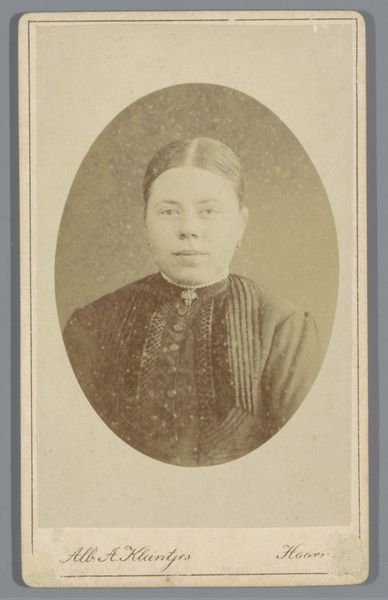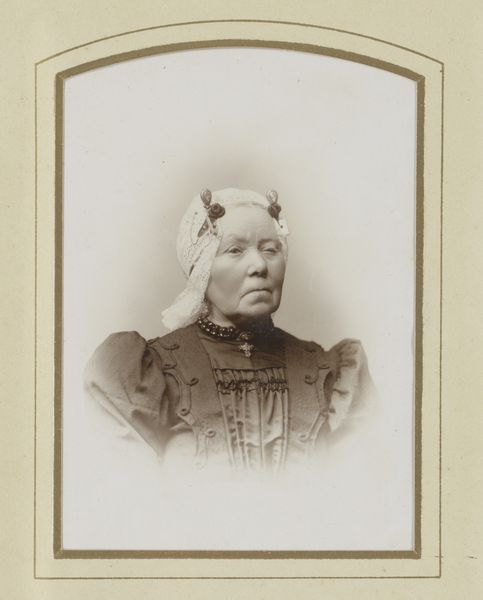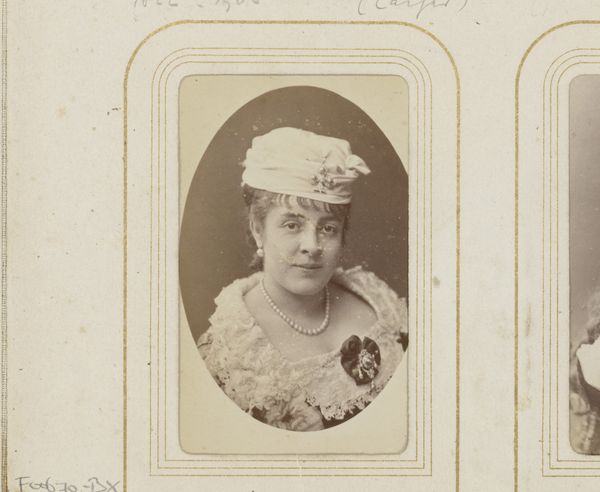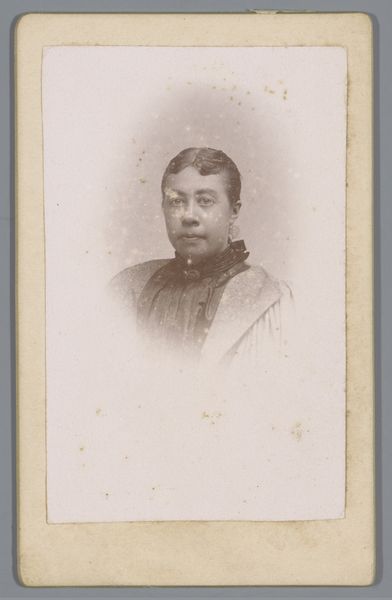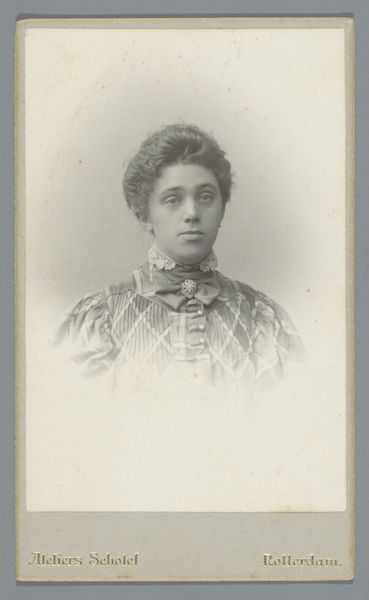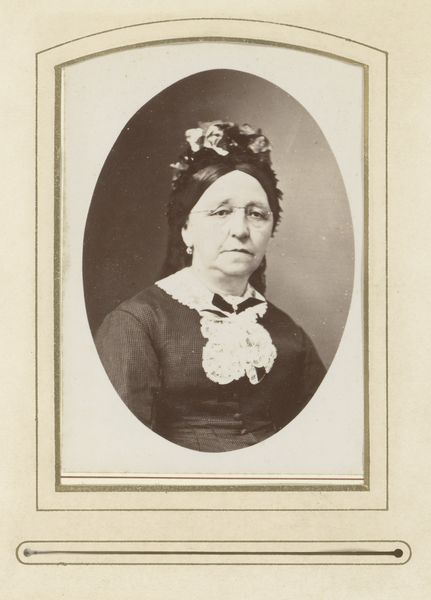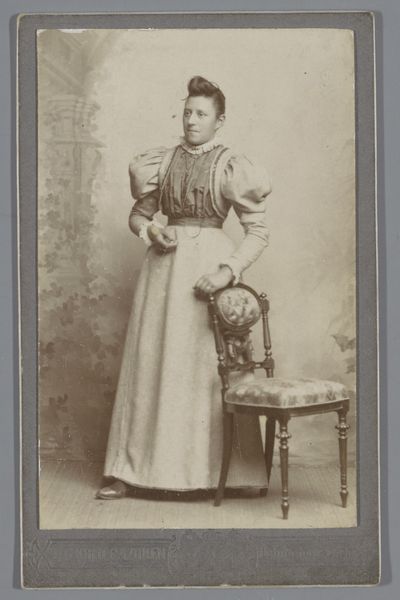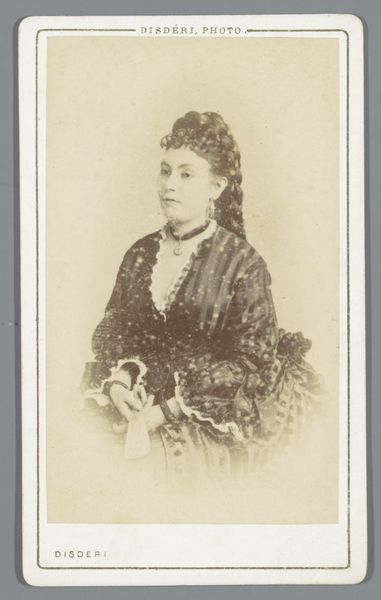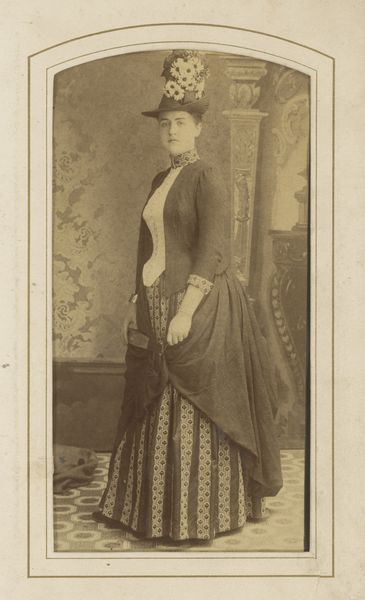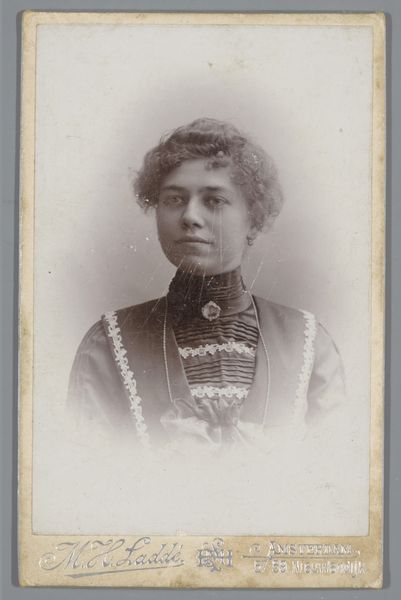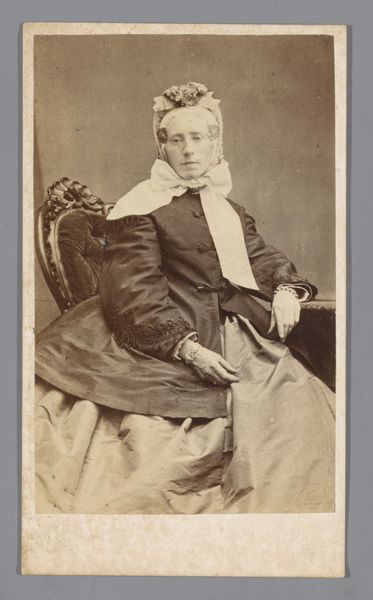
photography, albumen-print
#
portrait
#
indigenism
#
photography
#
albumen-print
Dimensions: height 91 mm, width 56 mm
Copyright: Rijks Museum: Open Domain
Curator: Here we have an albumen print created sometime between 1865 and 1890, housed here at the Rijksmuseum. The studio responsible for this photograph is Woodbury & Page, and it depicts Hamengku Buwono VIII, the Sultan of Yogyakarta. Editor: The first thing that strikes me is the formal yet subdued atmosphere. The muted tones and the Sultan's rather direct, yet reserved gaze create a sense of quiet power. The oval framing adds to the impression of an intimate, though controlled, encounter. Curator: It’s definitely a formal portrait, fitting within the conventions of representing royalty. The details of his attire speak to the complexity of Javanese court culture. I mean, just observe the intricate headwear, which is a traditional blangkon, and the high-collared tunic—it reflects a highly structured society. Editor: Precisely. I’m interested in how photography at this moment intersects with colonial power dynamics. Photography by European studios, even in creating portraits of local rulers, often reinforces a particular kind of gaze. What narratives are privileged and whose are silenced here? I wonder, how much control did Hamengku Buwono VIII have over his own representation? Curator: That’s a valid point. It’s a balancing act. He’s projecting an image of authority, of continuity with tradition, but through a medium dominated by Western technology and aesthetic values. The commission suggests the negotiation of power. There’s the element of "indigenism," in this case, the way cultural identity is affirmed, and also perhaps packaged, within this colonial framework. Editor: And the very fact that it is preserved in a European museum forces one to question how that affects its meaning. Is it documentation, representation, appropriation? Perhaps all three, coexisting uncomfortably. Curator: Right. Its very existence within our collection highlights a historical tension between the Netherlands and Indonesia, something we must confront. It's not just a portrait, but a historical document embedded in layers of power. Editor: A poignant reminder that even the most seemingly straightforward images hold complex histories and challenge us to critically examine the context from which they arise. Curator: Indeed, a reflection on our own institutional position within these complicated legacies.
Comments
No comments
Be the first to comment and join the conversation on the ultimate creative platform.

